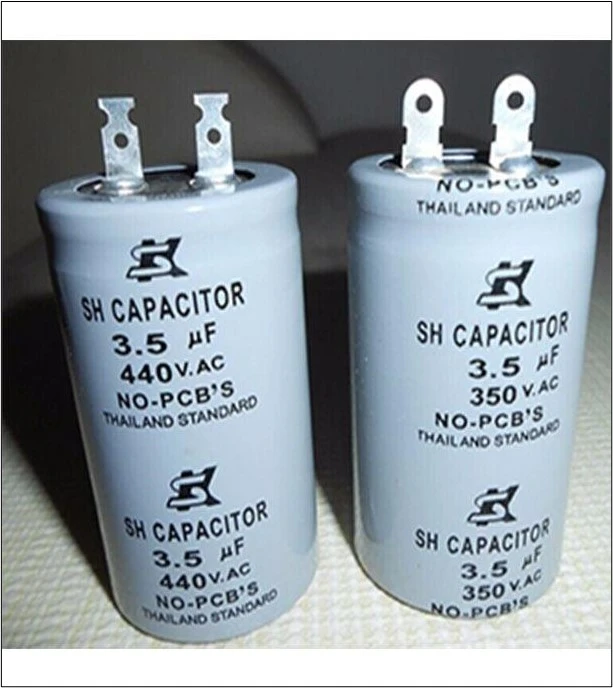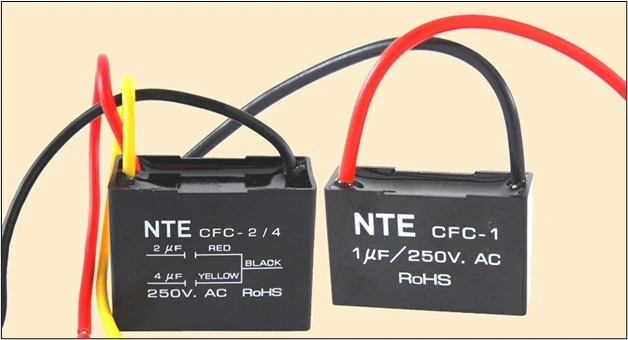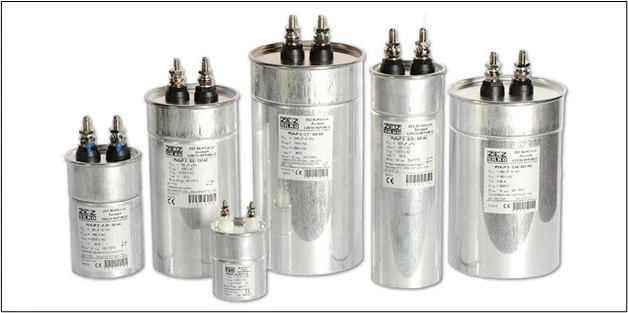Have you ever looked up at your ceiling fan and wondered how it does its magic? Well, ceiling fans are pretty cool because they can help keep our rooms comfy. But guess what? Some of them have a special part inside called a ‘capacitor.’ And here’s the interesting part: some fans have just one capacitor, while others have two. Knowing whether your fan has one or two capacitors can be useful if you ever need to do some tinkering or make it work even better. Let’s take a closer look and learn how to tell if your ceiling fan is a one-capacitor wonder or a two-capacitor champ.

Single Capacitor Fan vs. Dual Capacitor Fan
| Aspect | Single Capacitor Ceiling Fan | Dual Capacitor Ceiling Fan |
| Number of Capacitors | 1 | 2 |
| Fan Speed Control | Typically has 3 speed settings (Low, Medium, High) controlled by pull chains or a remote. | Offers more flexibility with 4 or more speed settings. Some models allow precise speed adjustment. |
| Lighting Control | Often shares the capacitor with the fan motor, so light and fan are controlled together. | Separate wiring for fan motor and lighting, enabling independent control of both. |
| Energy Efficiency | Limited speed options may result in less energy-efficient operation. | More speed options allow you to choose a speed that balances comfort and energy savings. |
| Versatility | Simple operation suitable for basic fan needs. | Ideal for users who want finer control over both fan speed and lighting. |
| Wiring Complexity | Simplified wiring with fewer wires. | More wiring is involved due to separate controls for the fan and lighting. |
| Common Applications | Common in basic, budget-friendly ceiling fans. | Found in higher-end ceiling fan models with advanced features. |
| Noise Levels | May produce slightly more noise at lower speeds due to limited options. | Allows for quieter operation at lower speeds by choosing the right setting. |
| Price Range | Typically more affordable. | Often comes with a higher price tag due to advanced features. |
| Installation Considerations | Easier for DIY installation. | May require more complex wiring and professional installation. |
Which One Suits You Better?
Both types of fans may need different steps of installation and have different features. So, here’s a breakdown of the advantages and considerations for both single-capacitor and dual-capacitor ceiling fan features.
Choosing one then becomes a personal choice:
Single Capacitator Fan
Simplicity
- Usually has three-speed settings (low, medium, high)
- Making it easy to operate.
- Straightforward installation, suitable for DIY enthusiasts.
Affordability
- Typically more budget-friendly, making it cost-effective.
Basic Functionality
- Ideal for those who prefer a basic fan without too many controls.
- Good for spaces where simple cooling is the primary goal.
Limited Controls
- May not offer as many speed options or independent lighting control.
Dual Capacitor Ceiling Fan
Versatility
- Often equipped with four or more speed settings, allowing precise speed adjustment.
- Provides independent control for both fan speed and lighting.
Energy Efficiency
- Offers a broader range of speed settings for optimizing comfort and energy savings.
- To reaffirm look at the Energy Star label, as it is a reliable indicator of energy efficiency for fans. Products with this label meet or exceed energy efficiency guidelines set by the U.S. Environmental Protection Agency (EPA).
Advanced Features:
- Typically found in higher-end models with advanced features and options.
- Have a diverse range of controls and are more durable than the former.
Higher Price Tag:
- Often comes with a higher initial cost due to its advanced capabilities.
Dual Capacitor vs. Single Capacitor Fan Switch
The key differences between single-capacitor fan switches and dual-capacitor fan switches are as follows. Let’s break down the distinctions:
Single Capacitor Fan Switch:
- In a single capacitor fan switch, typically only one capacitor is used to control the fan’s operation.
- This type of switch is commonly used with devices that require only one capacitor.
- Single capacitor switches have two terminals.
- The fan’s speed is often controlled by changing the capacitance value.
- Smaller HVAC systems, like air conditioners, may use single capacitor switches.
Dual Capacitor Fan Switch:
- In a dual capacitor fan switch, two capacitors are connected in parallel, resulting in higher torque and increased power consumption.
- These switches are often used in scenarios where more power is needed.
- Dual capacitor switches have three terminals: Common (C), Fan (FAN), and Hermetically-Sealed Compressor (HERM).
- Two physical capacitors are integrated into one unit, which saves space.
- Dual capacitors are capable of providing high starting and running torque.
- The current through a dual capacitor can be significant, leading to copper losses and potential overheating.
- They are often used in ceiling fans with permanent split capacitor motors.
- Dual capacitors can increase capacitance and fan speed when appropriately configured.
The primary difference between single and dual capacitor fan switches lies in their configuration and the number of capacitors they use. Single capacitor switches have only one capacitor and two terminals, while dual capacitor switches utilize two capacitors in parallel, resulting in three terminals.
Dual capacitors are typically employed when higher torque and increased power are required, such as in ceiling fans with more advanced motor designs. However, the choice between the two depends on the specific requirements of the fan and the desired performance characteristics.

How to tell if a Ceiling fan has an AC or DC capacitor?
Determining whether a ceiling fan has an AC (Alternating Current) or DC (Direct Current) capacitor can be challenging because this specific information is not typically provided in fan specifications or visible during casual inspection. Ceiling fan manufacturers often do not specify the type of capacitor used in their products. However, you can try the following approaches to gather more information:
Check the Manufacturer’s Information
Visit the manufacturer’s website or contact their customer support. Sometimes, manufacturers provide technical information about their fans, including the type of motor and capacitors used. They may also have downloadable manuals that contain detailed specifications.
Examine the Fan Motor
While it may not directly reveal the type of capacitor, the type of motor used in the fan can offer clues. DC ceiling fans typically have brushless DC (BLDC) motors, while AC fans use standard AC motors. However, this is not a foolproof method, as some AC fans may also have BLDC motors for energy efficiency.
Inspect the Fan Control
If your fan has advanced control options like variable speed control, remote control, or smart capabilities, it might be an indicator of a DC motor, which often requires electronic control. AC fans typically have simpler pull chain or wall switch controls.
Read the Owner’s Manual
If you have the owner’s manual that came with your ceiling fan, check it for any information regarding the type of motor or capacitor used. Manufacturers sometimes include this technical information in their manuals.
Contact a Professional
If you’re still uncertain about the type of capacitor in your ceiling fan, consider consulting an electrician or a technician who can inspect the fan’s internal components and provide more precise information.

Conclusion
Figuring out if your ceiling fan has one or two capacitors is a handy skill. It helps you understand how your fan works and troubleshoot issues. Both singer capacitors and dual capacitors serve different purposes. Faraday ratings are useful for this, you can tell by checking the wires connected to the fan’s capacitor. If you see two wires, it’s a single capacitor fan; if there are three or more, it’s a dual capacitor fan. Knowing this lets you make better choices for fan speed, energy use, and overall comfort in your home.
Read Next:-
Best Airfryer under 5000
Common Air Conditioner Problems






